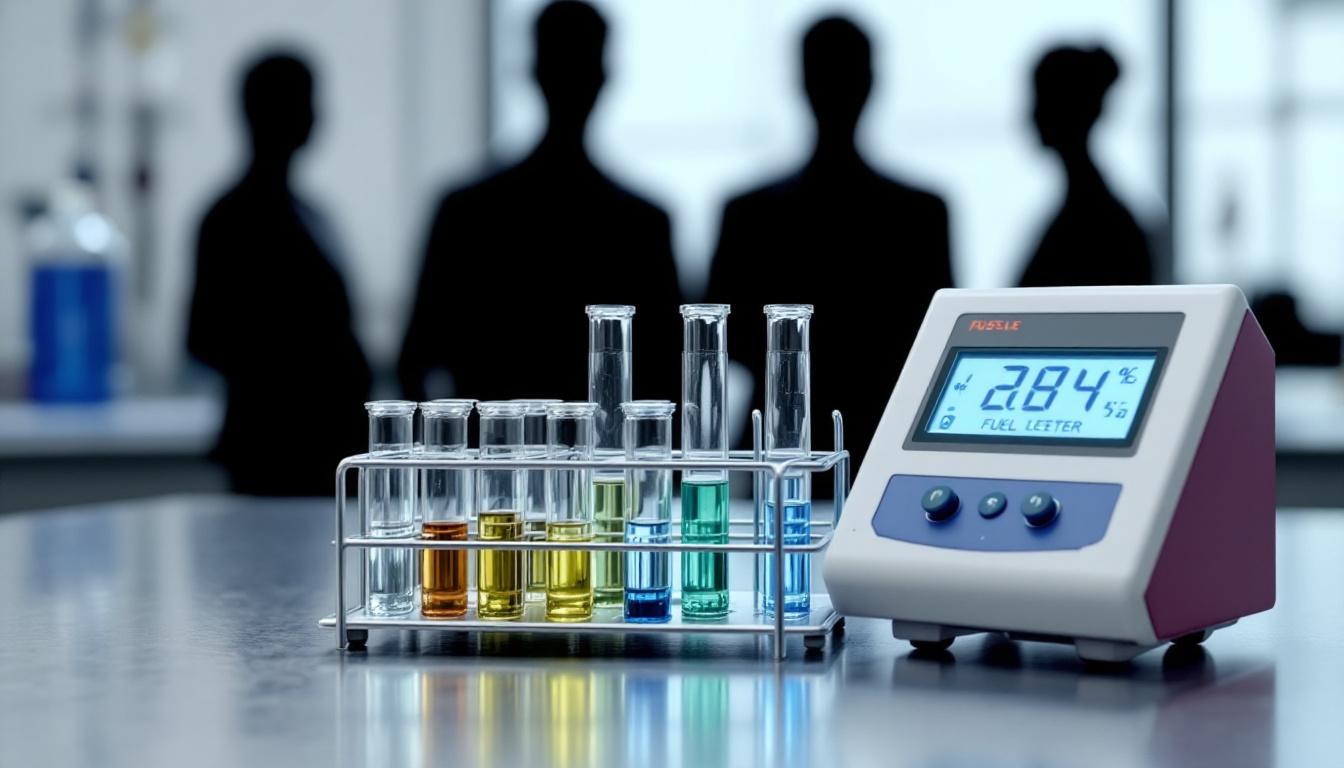
Fuel Inspection
At GLOBAL TERMINAL NETHERLANDS B.V, we understand the critical role of fuel inspection in maintaining operational excellence.
Fuel quality directly impacts equipment performance, safety, and regulatory compliance. Regular inspections, including SGS fuel testing, are essential for identifying potential issues before they escalate.
This blog post explores the importance of fuel inspection, common methods, and key parameters to monitor.
Why Fuel Inspection Matters
Fuel inspection forms the bedrock of operational safety and efficiency in the energy sector. This process protects fuel quality, which directly affects equipment performance and longevity. The U.S. Environmental Protection Agency (EPA) reports that subpar fuel quality can reduce engine efficiency by 10-20%, underscoring the economic impact of neglecting proper inspection protocols.
Safeguarding Equipment and Operations
Consistent fuel inspections prevent equipment damage. API is the premier source for petroleum industry data and information, providing accurate and comprehensive statistics. Companies that implement stringent inspection routines significantly reduce the risk of unexpected downtime and expensive repairs. A National Association of Fleet Administrators study revealed that businesses with comprehensive fuel quality management programs cut maintenance costs by 30% over five years.
Meeting Regulatory Standards
The fuel sector demands strict compliance with industry standards and regulations. The International Maritime Organization (IMO) enforces tight sulfur content limits for marine fuels (global cap of 0.50% m/m since 2020). Fuel inspection ensures adherence to these standards. Non-compliance results in severe penalties, with fines reaching up to $75,000 per violation day in some jurisdictions.
Enhancing Operational Efficiency
Fuel inspection boosts operational efficiency beyond regulatory compliance. New vehicle fuel economy standards for model years 2024-2026 aim to make vehicle miles per gallon more efficient, save consumers money at the pump, and reduce transportation emissions. This translates to substantial cost savings, especially for large-scale operations. Furthermore, consistent fuel quality optimizes engine performance, which reduces emissions and supports environmental sustainability goals.
Protecting Consumer Interests
Fuel inspection also safeguards consumer interests. It ensures that the fuel sold at retail stations meets quality standards, protecting vehicle engines from damage due to substandard fuel. The Missouri Department of Agriculture’s Fuel Quality Program (one of only 14 robust state programs) conducts over 20 chemical and visual analyses on gasoline, diesel, and alternative fuels. This program not only protects consumers but also promotes the use of alternative fuels like biodiesel and E85 fuel ethanol.
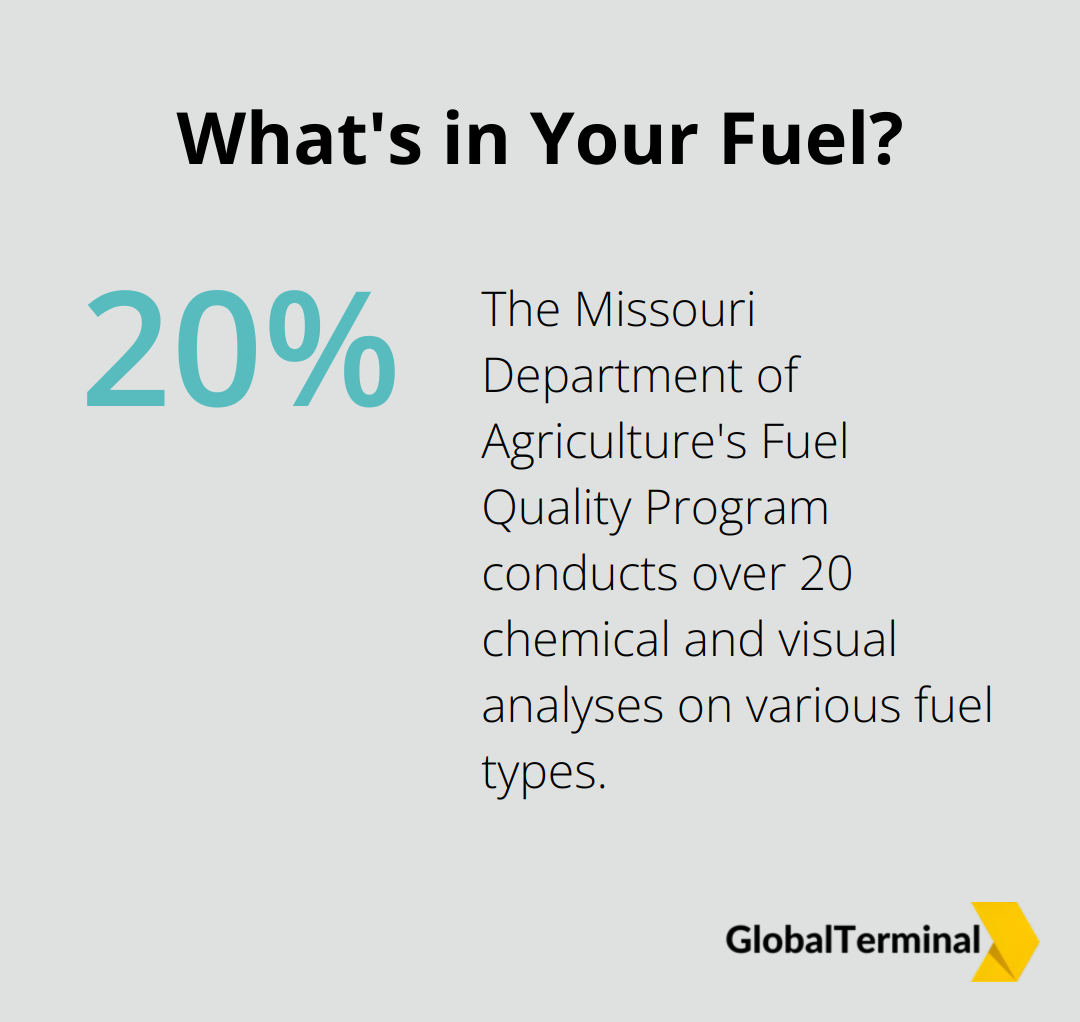
As we move forward, let’s examine the common methods used in fuel inspection to maintain these high standards of quality and safety.
Fuel Inspection Methods: A Practical Guide
At Global Terminal Netherlands B.V., we employ a range of advanced fuel inspection methods to ensure the highest quality standards. These methods play a vital role in maintaining fuel integrity throughout storage and transportation processes.
Visual Inspection: The First Line of Defense
Visual inspection serves as a fundamental step in fuel quality assessment. Trained technicians conduct thorough visual checks of fuel samples to identify signs of contamination, discoloration, or particulate matter. This method, while simple, quickly identifies obvious issues such as water contamination or excessive sediment.
Chemical Analysis: Unraveling Fuel Composition
Gas chromatography (GC) is an analytical technique used to separate and analyze environmental matrices for contaminants. This method has been widely accepted for its ability to provide detailed information about fuel composition.
Spectroscopy: Revealing Molecular Structures
Spectroscopic methods offer rapid and non-destructive analysis of fuel samples. Techniques like infrared spectroscopy and Raman spectroscopy provide insights into molecular structures and chemical bonds within the fuel. This allows for quick identification of adulterants or off-spec components.
Density Testing: Confirming Fuel Consistency
Density testing stands as a critical parameter in fuel quality assessment. ASTM designations are the easiest way to find specific test methods. Each test summary page refers to equivalent methods, providing a comprehensive guide for density testing and other fuel quality assessments.
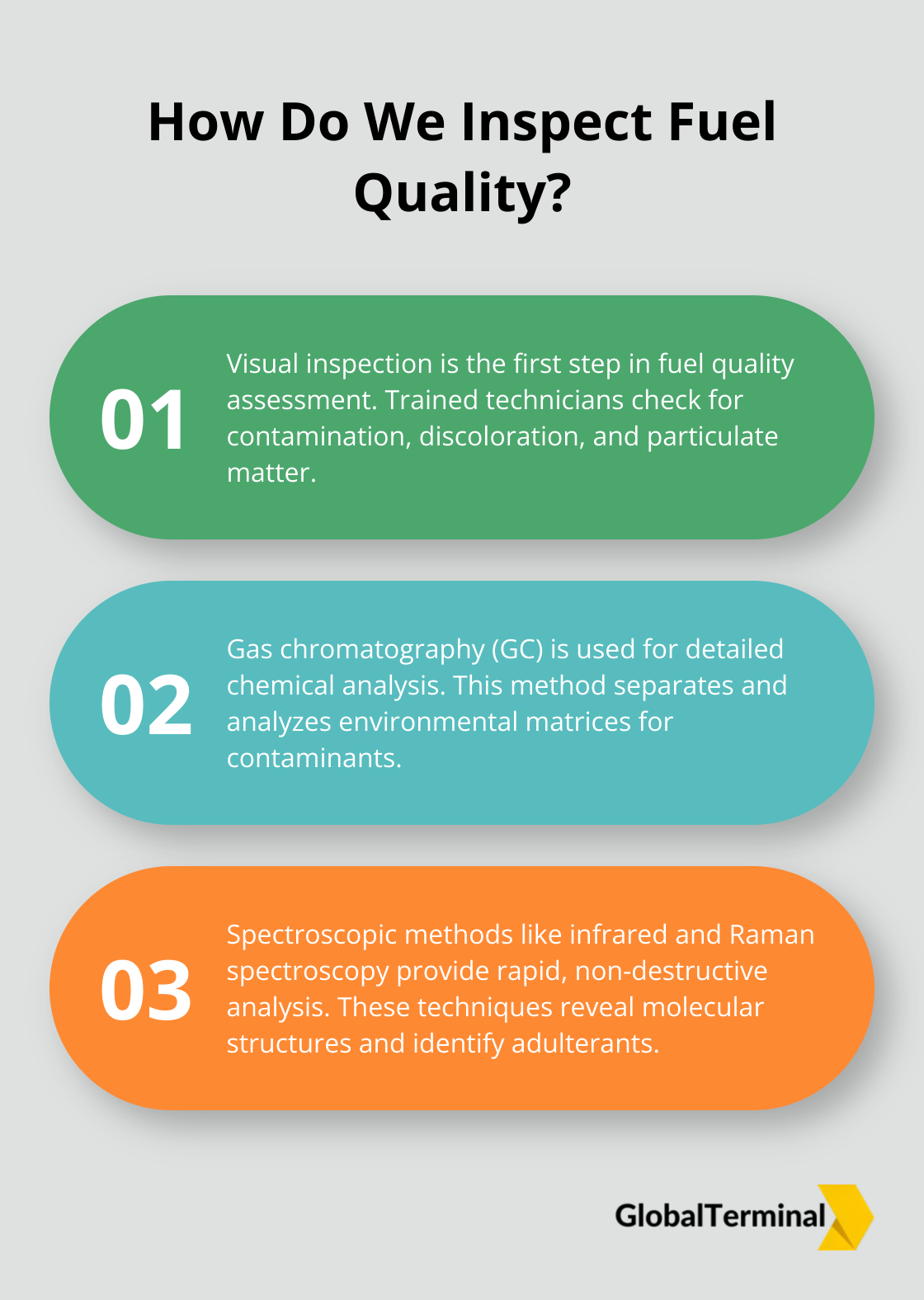
These diverse inspection methods maintain the highest standards of fuel quality. This comprehensive approach not only meets but often exceeds industry regulations, providing clients with the assurance of premium fuel storage and logistics solutions. As we move forward, we will explore the key parameters that these inspection methods measure and why they matter in fuel quality assessment.
Critical Fuel Quality Parameters
At Global Terminal Netherlands B.V., we monitor key fuel quality parameters to maintain fuel integrity and prevent potential operational issues. Our rigorous fuel inspection process focuses on several critical indicators.
Water Content: A Hidden Danger
Water contamination presents a significant risk to fuel quality. Even minimal water amounts can cause corrosion, promote microbial growth, and damage engines. The American Society for Testing and Materials (ASTM) establishes strict standards for fuel quality. ASTM D975 covers seven grades of diesel fuel oils suitable for various types of diesel engines. We use advanced Karl Fischer titration methods to measure water content accurately, ensuring our stored fuels meet or exceed these stringent requirements.
Particulate Matter: Microscopic Threats
Particulate contamination can obstruct filters, injectors, and other vital engine components. The ISO 4406 cleanliness code classifies the level of particulate contamination in fuels. This code measures the number of particles larger than 4µm, 6µm, and 14µm within a 100ml fluid sample. Our cutting-edge particle counters detect particles as small as 4 microns, allowing us to maintain fuel cleanliness levels that surpass industry standards.
Sulfur Content: Environmental and Legal Considerations
Sulfur content in fuel is a key parameter due to its environmental impact and regulatory implications. The U.S. Environmental Protection Agency (EPA) mandates ultra-low sulfur diesel (ULSD) with a maximum sulfur content of 15 ppm for on-road use. We employ X-ray fluorescence spectroscopy to measure sulfur levels precisely, ensuring compliance with these strict regulations and supporting our clients’ environmental sustainability goals.
Viscosity and Density: Flow and Performance Indicators
Viscosity and density are essential parameters that affect fuel flow and engine performance. These properties influence fuel atomization, injection timing, and combustion efficiency. We use specialized equipment (such as viscometers and hydrometers) to measure these parameters accurately. Our tests ensure that the fuel meets the specifications required for optimal engine performance and efficiency.
Microbial Growth: Preventing Biological Contamination
Microbial contamination can lead to fuel degradation, filter clogging, and corrosion. We conduct regular tests to detect and quantify microbial presence in stored fuels. These tests include culturing methods and advanced DNA analysis techniques. By monitoring microbial growth, we can implement timely treatment measures (e.g., biocides) to prevent fuel degradation and protect storage infrastructure.
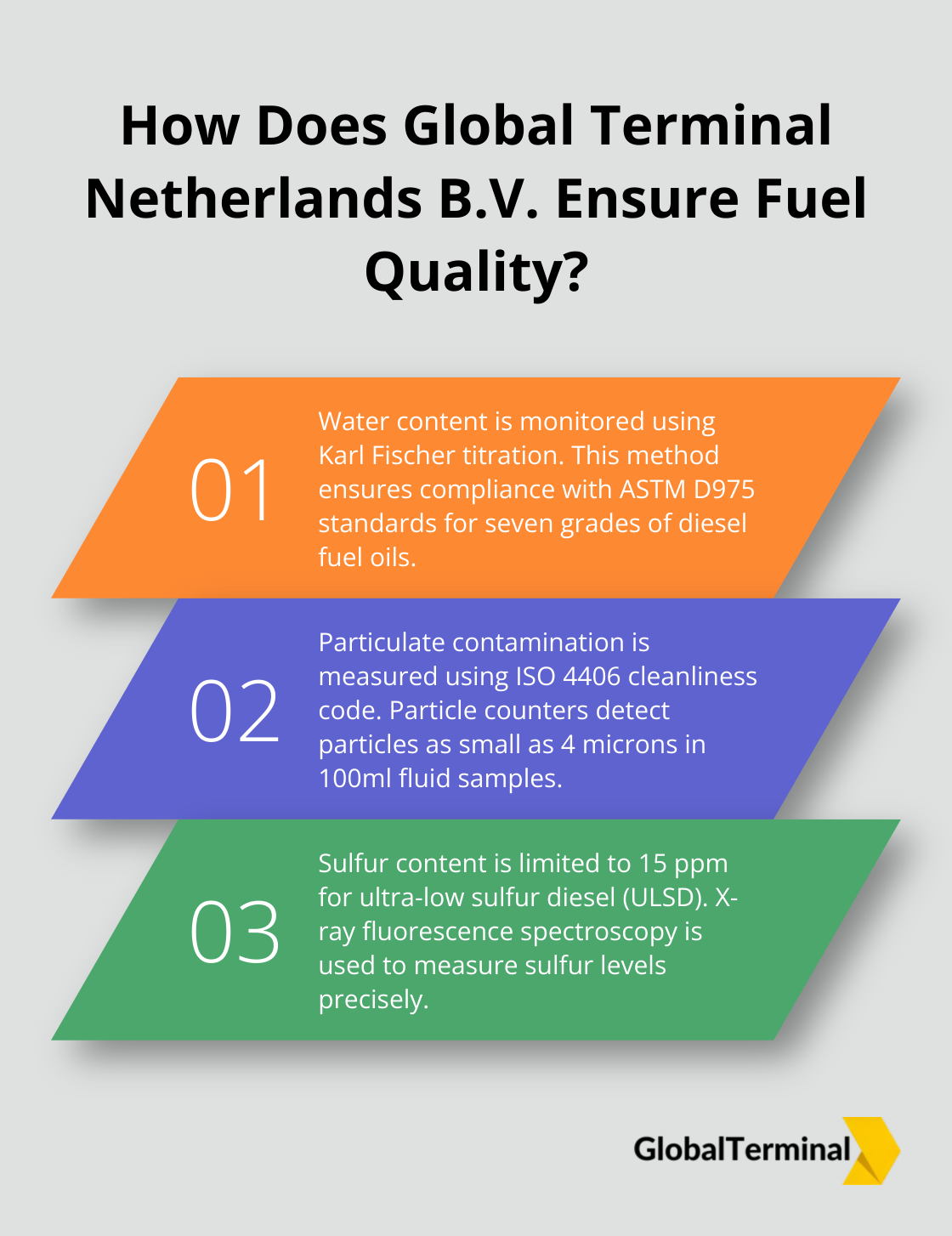
Final Thoughts
Regular fuel inspection forms the cornerstone of operational excellence in the energy sector. Businesses protect their equipment, comply with regulations, and optimize performance through rigorous quality control measures. The economic impact proves substantial, as proper fuel management reduces maintenance costs and improves efficiency significantly.
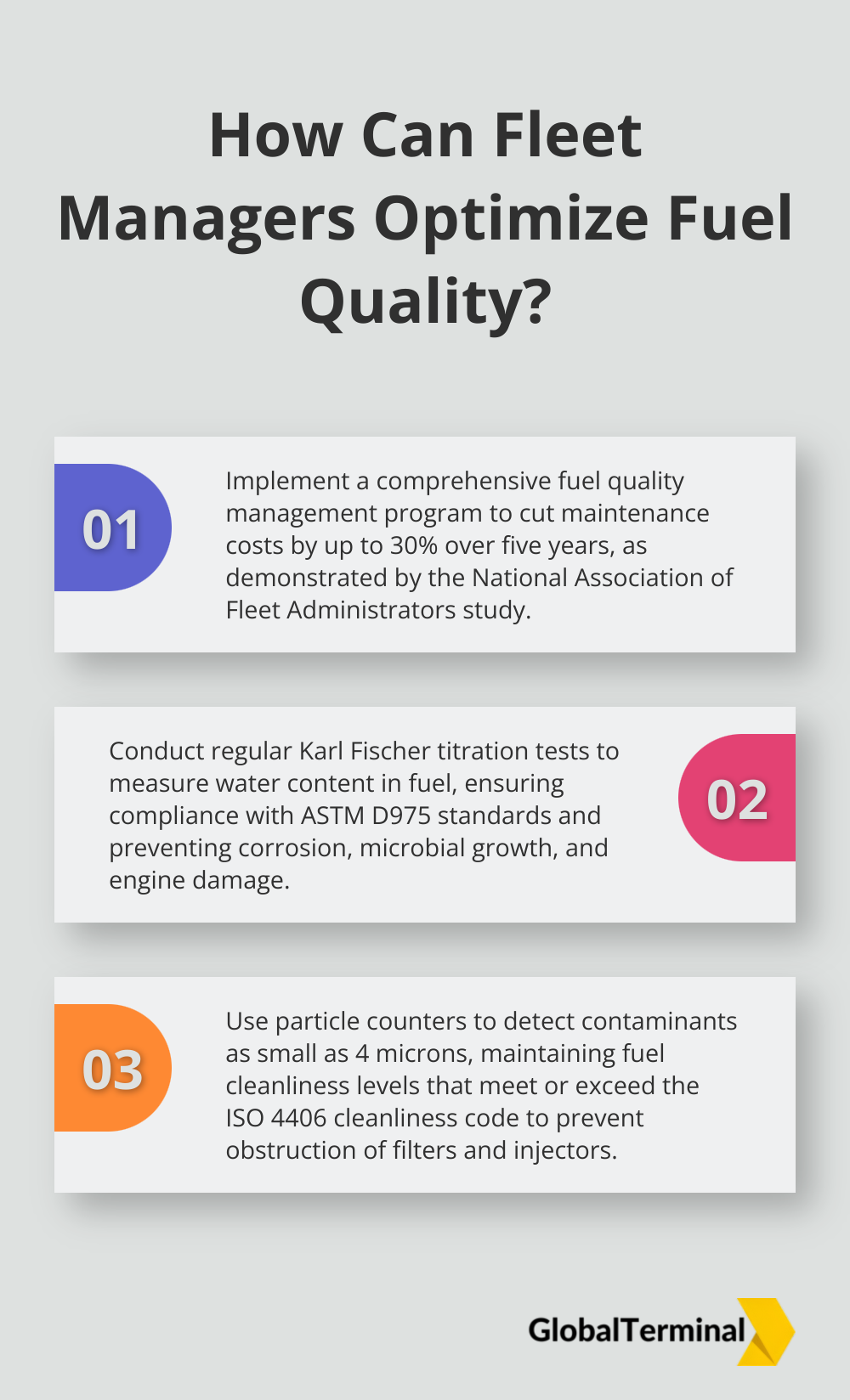
Consumers benefit equally from thorough fuel inspection. They trust that their purchased fuel meets quality standards, which protects their vehicles and equipment from potential damage. This assurance extends to environmental considerations, as high-quality fuel contributes to reduced emissions and improved air quality.
At Global Terminal Netherlands B.V., we remain at the forefront of fuel inspection developments, including SGS fuel testing. We invest in cutting-edge technology and expertise to provide our clients with the highest quality fuel storage and transportation services. The future of fuel inspection promises even greater advancements in safety, efficiency, and environmental stewardship.
Related posts
Liquid Bulk Freight Rates: Pricing Factors Explained
Explore liquid bulk freight rates factors, including supply-demand, oil prices,
Current Jet A1 Fuel Prices: Market Trends
Understand current Jet A1 fuel prices and market trends. Discover influencing fa
What’s in Jet A1 Fuel? Composition Explained
Explore Jet A1 fuel composition, its key ingredients, benefits, and how it power

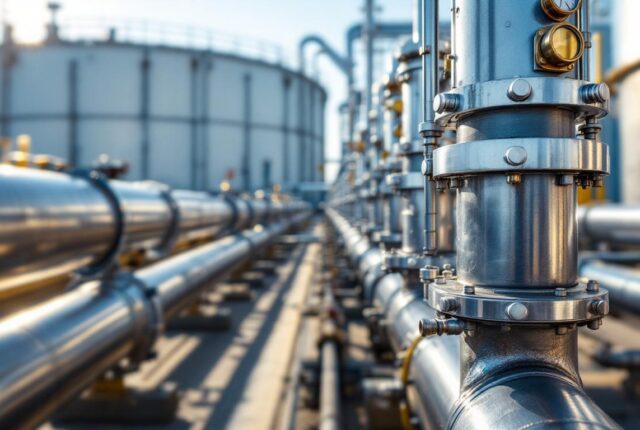
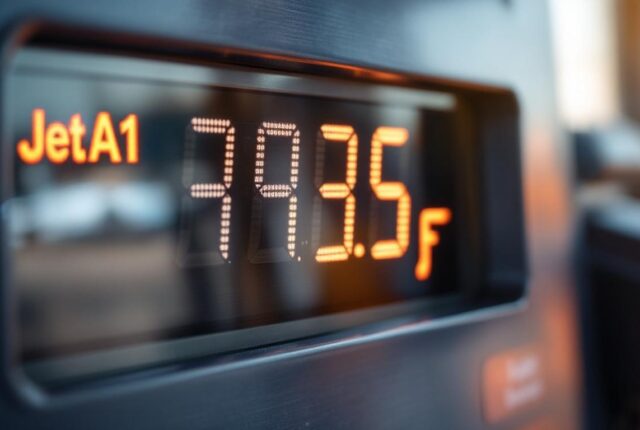


Leave a Reply